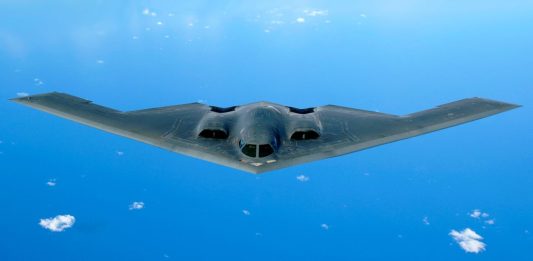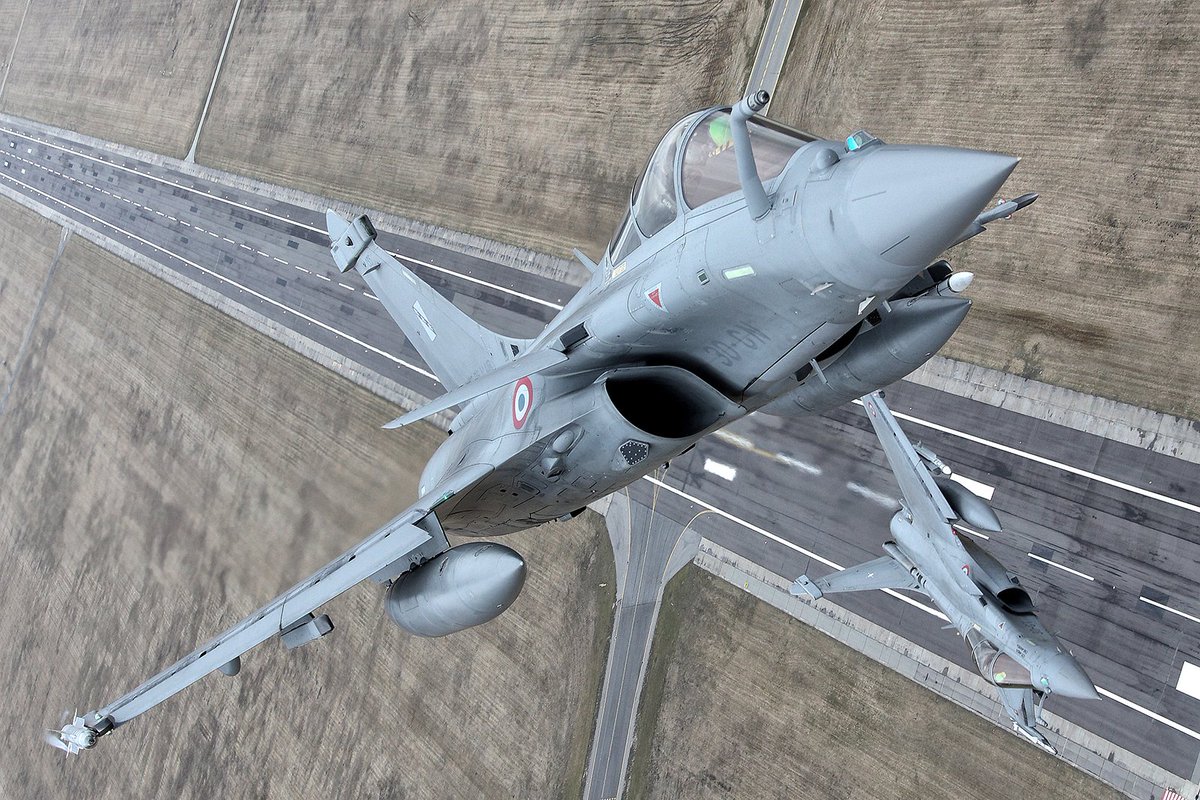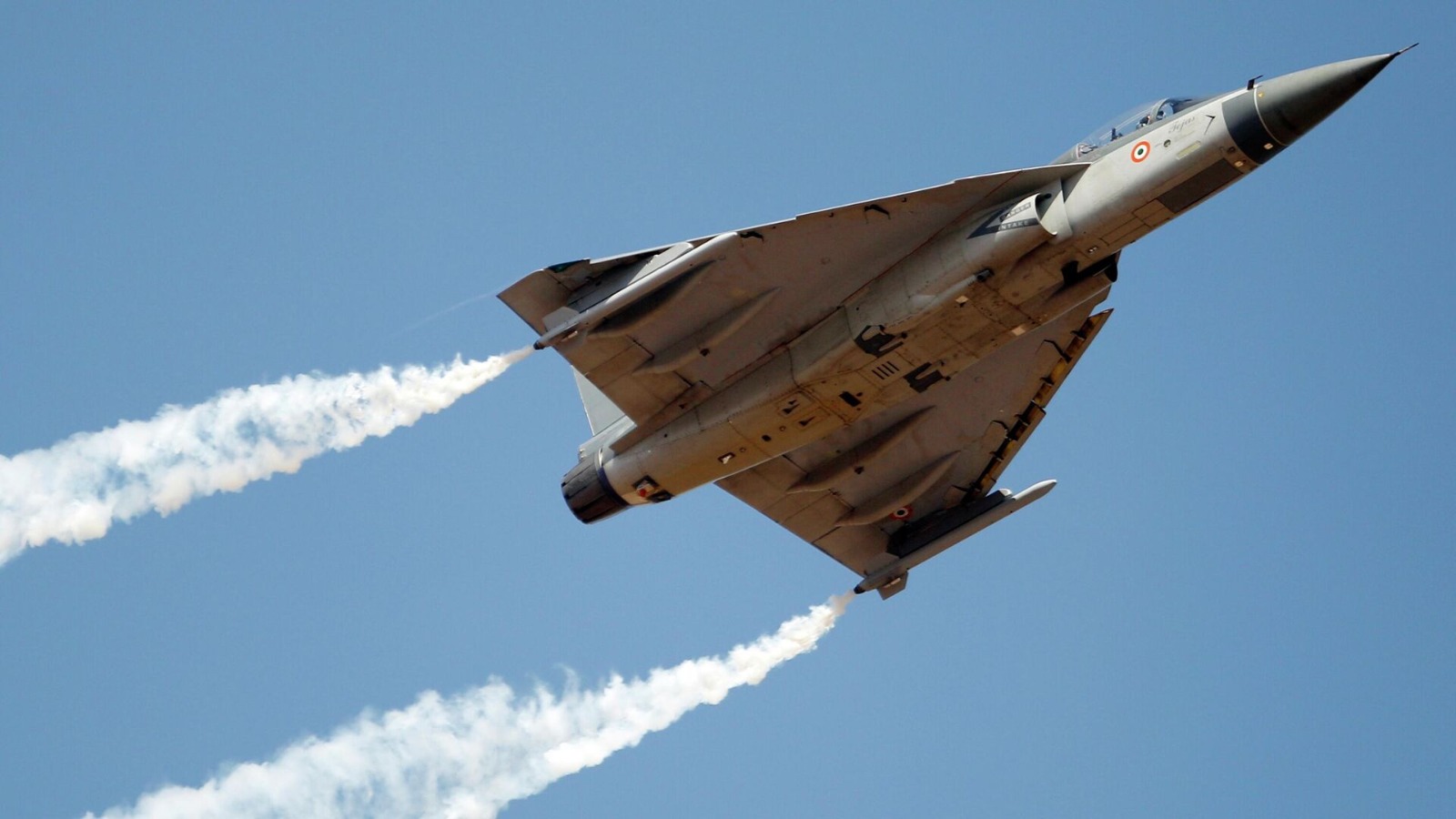By Ritu Sharma
In the latest posturing along the Line of Actual Control (LAC) with India, China has deployed its J-10 Vigorous Dragon fighters just 300 kilometers from the Indian base that is home to Rafale fighter jets.

Pakistan has inducted and deployed these single-engine multi-role fighters specifically to counter the French Rafales that the Indian Air Force (IAF). The question remains if India’s two frontline fighter jets—Rafales and LCA Tejas MK1A—can take up the gauntlet thrown by the Vigorous Dragon.
As the EurAsian Times reported, China has stationed these fighter jets, along with six J-20s, at the Chinese Shigatse Airbase, located less than 300 kilometers from Hasimara Air Base in West Bengal, where the Rafale fighter jets are located. India, unlike China, does not have a fifth-generation aircraft in its arsenal.
The satellite imagery of China’s deployment of fighter jets comes as India announces the implementation of the long-pending demand of raising a new Army division for deployment in eastern Ladakh. Relations between the countries have been spiraling down since the Galwan clash in 2020, and Beijing has called the repositioning of 10,000 Indian Army troops non-conducive to peace and stability in the region.
The Indian Army has been gearing up for Chinese aggression as the summer is here in the Indian subcontinent. During his visit to the US, Indian Army Chief General Manoj Pande was provided with detailed and quality technical-signal intelligence and satellite feeds on Chinese military movements in Tibet and neighboring provinces.
Despite the anticipation and the build-up, Indian air power needs an immediate shot in the arm to match the collective capability of two of its neighbors. The induction of 36 Rafales was the first step in modernizing the IAF’s aging fleet and arresting its falling number of fighter squadrons.
Since then, the delivery of LCA Tejas Mk1A has been pushed back, and there has been no movement on the acquisition of the 114 Medium Role Fighter Aircraft or additional Rafale fighter jets.
Pakistan inducted the aircraft in its combat fleet in response to India’s induction of French Rafale fighter jets. It is equipped with an indigenous AESA (Active Electronically Scanned Array) fire-control radar. The aircraft is capable of all-weather operations. Its primary role is air-to-air combat, but it can also perform strike missions.
The J-10 C is often compared to upgraded variants of the American F-16 Fighting Falcon. Like the F-16, the J-10 boasts a highly agile, aerodynamically unstable airframe, which is stabilized by a computer in its fly-by-wire flight control system.
Its capabilities include beyond-visual-range engagement, precision air-to-ground strike, digital glass cockpit instruments, in-flight refueling, and electronic warfare.

J-10 vs Rafale
Air Marshal Anil Chopra (retired), an IAF fighter test pilot and the ex-director-general of the Center for Air Power Studies, thinks that the comparison between the J-10CE and Rafale fighter jets is “somewhat unfair” as the latter is a twin-engine combat-proven fighter jet. Its electronic warfare suite is unparalleled.
“The J-10 and the Rafale can both be termed 4.5-generation multi-role fighter jets that, on some counts, have similar performance and capabilities. However, the Rafale has a clear edge over the J-10 in terms of technology, weapons, aero-engines, and combat experience,” the senior IAF official says.
Both fighter jets are categorized as 4.5-generation, but Rafale’s electronic warfare suites are among the best in the world.
“The Rafale has been used in combat operations in Mali, Afghanistan, Libya, Iraq, and Syria. The J-10 has, at best, only done joint exercises with Pakistan,” Air Marshal Chopra concludes, comparing the two fighter jets.
However, India only has 36 of these French fighter jets and two adversaries on both sides of the Eastern and Western sectors.
LCA Mk1A Vs J-10C
The situation is reversed when the Vigorous Dragon is compared to the latest variant of the indigenous fighter jet LCA Mk1A. The IAF has bet heavily on the fighter jet and placed a contract for 83+97 of these fighter jets to be manufactured by Hindustan Aeronautics Limited (HAL).
The industry has been abuzz about the first of this variant, which will be delivered to the IAF by February 3, 2024.
However, HAL has pushed back the delivery of the fighter jet to mid-2024, citing the disruption of the global supply chain. The LCA Tejas Mk1A is to replace the MiG-21 bison aircraft. In other words, the Soviet-vintage fighter aircraft are awaiting the delivery of the indigenous variant to be phased out.
The IAF needs to maintain 42 squadrons to maintain combat parity with both its neighbors. But its numbers are down to 31 fighter squadrons. Phasing out MiG-21 squadrons without a replacement would mean further dipping in the numbers.
According to technical specifications, the J-10 is larger, heavier, and has a higher speed ceiling than the Tejas LCA. However, the Tejas LCA offers better range and agility.
However, J-10 C has already been deployed in China and Pakistan, whereas LCA Tejas Mk1A remains in the assembly lines.

MRFA Is Critical For The IAF
Despite the IAF pushing hard for it, the Indian government, emphasizing “Made in India,” has not budged about purchasing 114 Medium Role Fighter Aircraft from foreign manufacturers at an estimated US $20 billion.
While the IAF’s capabilities have increased, its war endurance capacity and the strength of fighter and combat support platforms need attention. The IAF’s overall deterrence capability has not kept pace with the existing threat perception.
The former Vice Chief of IAF Air Marshal Anil Khosla told the EurAsian Times that while the Indigenous Tejas are good to make, “there is a requirement for new-generation multi-role aircraft to maintain a balanced force (till the domestic Tejas Mk II and Advanced Medium Combat Aircraft is ready).”
“MRFA aircraft need to be procured (maybe in the next installment of defense spending). These should be procured in phases (maybe two to three squadrons at a time. This would spread the expenditure over some time, and we would get later and better technology and features,” Khosla added.
Despite the Indian government’s emphasis on ‘Make In India’ for armed forces modernization, the LCA Mk2 project has yet to receive government funding. This means that it is still a dream.

The Tejas Mk 2 aims at the IAF with a 4.5-generation medium-weight-class fighter aircraft. It is meant to be an advanced version of the Tejas Mk 1A. India’s Cabinet Committee on Security (CCS) gave official approval to the project on September 1, 2022, for development, flight testing, and certification of the fighter jet. It did sanction USD 809.17 million.
However, the funding was tied to the US government’s approval of a 100 percent transfer of engine technology to India.
LCA Mk-2 will have enhanced range and endurance. The Mk-2 is 1,350 mm longer, featuring canards, and can carry a payload of 6,500 kg compared to the 3,500 kilograms that LCA can have. LCA Mk-2 will be powered by the General Electric F414-INS6 engine (earlier LCA variants used the F404).
The LCA Mk2 is expected to have a maximum speed of 1.8 Mach and a service ceiling of 50,000 feet. Heavy weapons of the SCALP class, Crystal Maze, and Spice-2000 will also be integrated into the Mk-2. The IAF is expected to order over 200 LCA Mk-2 fighters.
source : eurasiantimes
